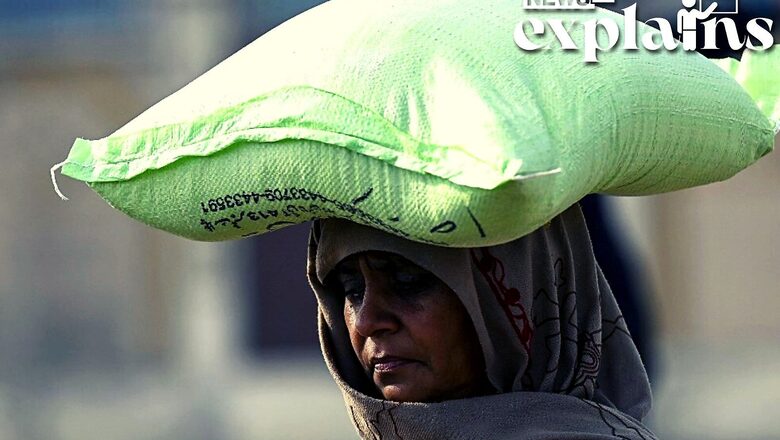
views
Pakistan is in the throes of a wheat crisis. Balochistan Food Minister Zamarak Achakzai has said the province has run out of wheat stock and the flour crisis has worsened. He stated that Balochistan urgently requires four lakh bags of wheat and warned that if this is not provided, the situation will worsen.
During the ongoing crisis, the price of wheat flour, which is a key component of the Pakistani people’s staple diet, has skyrocketed. In Karachi, flour costs between Rs 140 and Rs 160 per kilogramme. Meanwhile, a 10kg bag of flour costs Rs 1,500 and a 20kg bag costs Rs 2,800 in Islamabad and Peshawar.
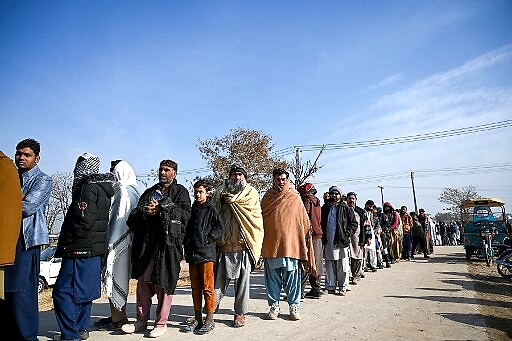
The mill owners in Punjab province have raised the price of flour to Rs 160/kg. A 20-kg flour bag costs Rs 3100 in Khyber Pakhtunkhwa after the government failed to control the price of the stable. Markets have become chaotic, and stampedes have been reported in several areas across the provinces of Khyber Pakhtunkhwa, Sindh, and Balochistan.
But Why Is This Happening?
The problem has been brewing for a long time – rooted in Pakistan’s economic crisis. Some reports also attribute mismanagement by the authorities as having led to the current situation.
Pakistan’s prime minister Shehbaz Sharif on Monday asked the IMF for a pause in its demands for economic reforms before releasing more financial aid, as the country tries to rebuild after catastrophic floods. Shehbaz Sharif said he was trying to persuade the International Monetary Fund (IMF) to give Islamabad some breathing space as it tackles the “nightmarish” situation.
The global lender wants Pakistan to withdraw remaining subsidies on petroleum products and electricity, aimed at helping the population.
Pakistan’s economy has crumbled alongside a simmering political crisis, with the rupee plummeting and inflation at decades-high levels, but the floods and the global energy crisis have piled on further pressure. The country is still reeling from the effects of severe floods in 2022, which killed 1,700 people and submerged vast swaths of the South Asian nation.
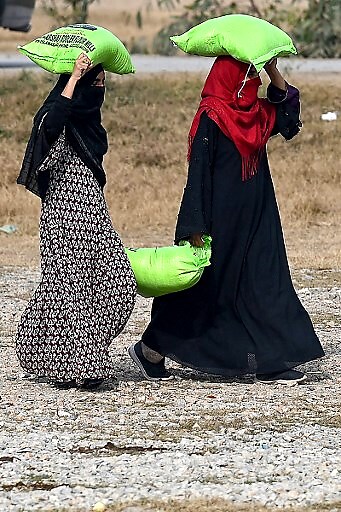
The ongoing Russian-Ukrainian conflict has also posed a problem to Pakistan. The majority of its wheat imports (80%) had come from the Black Sea region, one of the top four wheat production areas.
Sharif came to office in April last year, ahead of the floods in July and August.
A $6-billion IMF deal negotiated by the previous government was restarted after Pakistan finally met conditions such as ending subsidies on fuel. But Islamabad has so far only received half the funds — the last payment in August — with a further review of the package ongoing.
At the United Nations in Geneva for a conference on Pakistan’s recovery from last year’s catastrophic monsoon floods, Sharif was asked by reporters about the block on IMF funds. “Even before these floods hit Pakistan, we were already facing humongous challenges,” he said.
“Yet we had to again connect with the IMF and resurrect an agreement which was violated by the previous government — and accept even harsher conditionalities,” said Sharif.
Sharif spoke with IMF Managing Director Kristalina Georgieva on Saturday and asked her to “kindly be considerate and compassionate and give us some breathing space”, he said.
Economists and traders estimate the country has around three weeks of foreign exchange reserves left to service imports and a swift IMF cash injection is the only way to shore up the economy.
What the Flood Did to Country’s Wheat Production
Flooding caused by monsoon rains nearly tripled their usual ferocity last summer and wiped out vast swaths of crops, leaving already impoverished families struggling to find food, the Associated Press had reported. Farmers and government officials had warned in 2022 that Pakistan may face severe food shortages at a time when the government is short on funds and global food prices are high.
According to officials, nearly 15% of Pakistan’s rice crop and 40% of its cotton crop were lost after the floods. The floodwaters also wiped out personal grain stores, which many farming families rely on for food all year.
The flooding, which was caused in part by climate change, killed nearly 1,600 people, damaged nearly 2 million homes, and caused more than $30 billion in damage.
In September last year, Prime Minister Shahbaz Sharif had told The Associated Press at the United Nations that crops on 4 million acres had been washed away. The government at the time had said there was no immediate concern about food supplies. According to the state disaster agency, wheat stocks were sufficient to last until the next harvest, and the government was importing more.
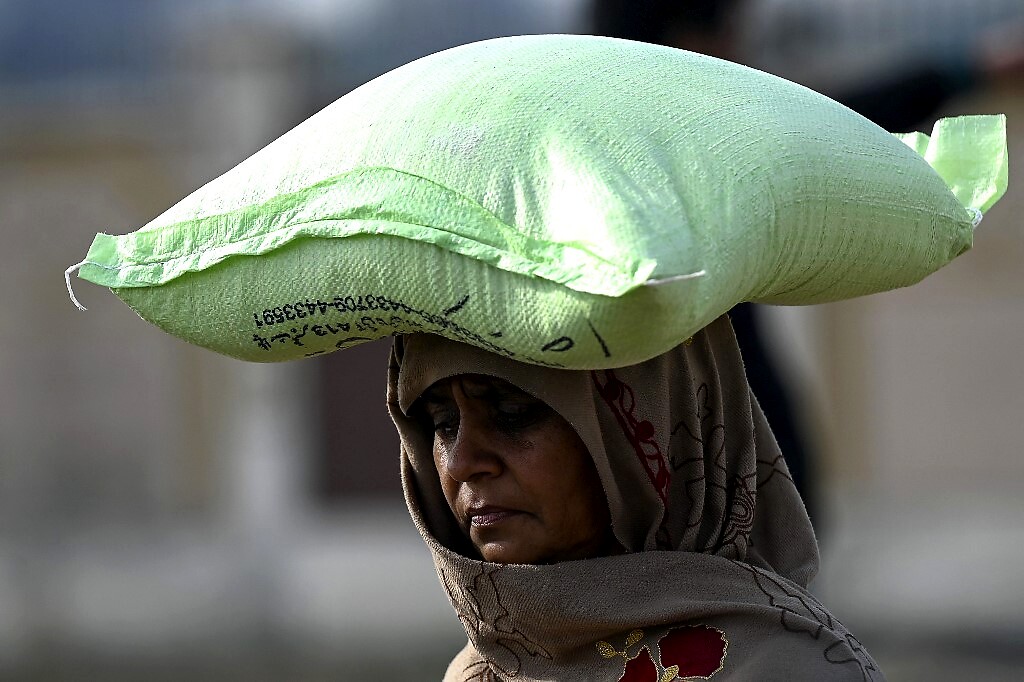
The report, published in September 2022, had however cast doubts on the upcoming wheat crop. “Planting usually starts in October. In Punjab province, the country’s main wheat producer, fields suffered less damage and can be sown in time. But in southern Sindh province, the second largest producer, some 50% of the fields remain underwater, according to Jam Khan Shoro, a provincial irrigation minister in Sindh,” the report explained.
According to the report, aerial footage from Sindh showed field after field filled with water. The Sindh province, located in Pakistan’s southern lowlands at the downstream end of its major rivers, was hardest hit by the floods: 80% of the rice crop and 70% of the cotton crop were destroyed, destroying the livelihoods of the small farmers who produce the majority of the crop.
Altaf Hussain Marri, a larger and more prosperous landowner in Khairpur, told AP at the time that he usually gives wheat as a gift to friends and family. He is now concerned about providing enough for himself and his children, and he is unsure whether his 400 inundated acres will drain in time. The floods destroyed his cotton and rice crops, which were worth around $40,000.
“If we fail to grow wheat … next year we might not have even wheat to eat,” Marri had said. “It will create food insecurity in the country. The poor will suffer a lot. There will be no flour.”
A Foretold Crisis
In recent years, Pakistan’s agricultural sector has expanded, allowing the country to export some wheat and rice. However, the situation has necessitated imports. According to a report by Express Tribune, a large consignment of wheat imported from Russia has arrived at Karachi port. Two ships carrying wheat arrived in Karachi on Monday, and another 4,50,000 tonnes of wheat from Russia will arrive in Pakistan via Gwadar.
The Pakistani government is importing 75 lakh tonnes of wheat to meet the country’s wheat shortage. Pakistan will receive the wheat it purchased from Russia by March 30. Wheat imported from other countries, in addition to Russia, is arriving at Karachi port. According to The Express Tribune, 3,50,000 tonnes of wheat have arrived at Karachi port.
The September 2022 report by Associated Press had said that Pakistan, at the time, had contingency plans in place to buy up to 2.5 million tonnes of wheat over the year, but officials were waiting to see how much wheat is planted, they said on condition of anonymity because the policy had not yet been finalised.
But Ashfaq Ahmad, a senior economist, had warned of the exact situation Pakistan is seeing now. He had told AP that additional wheat needed to be brought in quickly, by the next month.
Otherwise, “I am seeing a food crisis in December,” he told the AP. “Any delay in the import of wheat will cause food shortage.”
Read all the Latest Explainers here










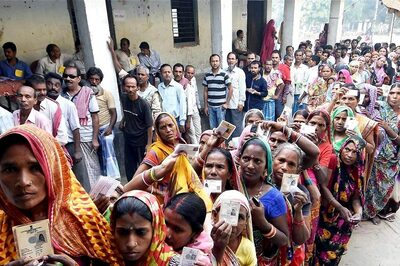








Comments
0 comment